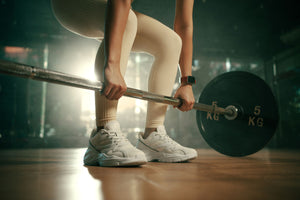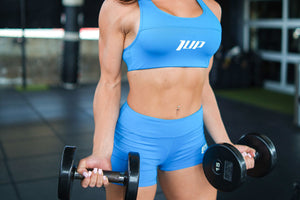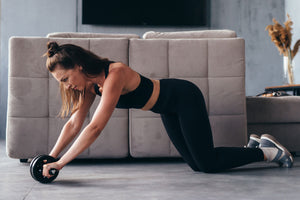After the squat, the leg press is the second most commonly used exercise to train the muscles of the quads and glutes. And, for lifters with a history of lower back and knee issues, many utilize the leg press as their primary lower body movement to train the quads and glutes.
Much like the squat, there are a number of different ways you can perform the leg press (bilateral, unilateral, close stance, wide stance, etc.) to help achieve a certain physique goal.
What are the differences between these different leg press stances and do they offer any additional benefits beyond your “normal” stance?
Let’s find out!
But first, a word….
“Targeting” a Muscle
Now, we all know that you can’t truly isolate or “spot train” one part of the muscle while not involving the other portions of the muscle during a compound exercise. But that doesn’t mean we can’t preferentially shift more of the tension onto a given area of muscle more than another.
To help illustrate this point, consider a typical barbell bicep curl.
The wider your grip (farther your hands are apart), the more you will emphasize the short head of the bicep. On the flip side, the more narrow (closer) your hands are, the more you emphasize the outer portion (long head) of the biceps during a barbell curl.
Both heads are still involved to one degree or another, but slight variations in placement and positioning of the hands will emphasize one head of the biceps more than the other.
The same thing applies to other exercises in your training program, such as the leg press. Depending on the placement of your feet on the sled will determine which aspects of the quadriceps you’re emphasizing during the exercise.
So, with that in mind, let’s take a look at some of the different leg press stances you can incorporate into your leg workouts and see how they may benefit you.
What are the Different Leg Press Stances?
Normal Stance
“Normal stance” refers to the typical placement of your feet on the leg press sled -- feet about hip-width apart (maybe slightly wider) and placed in the middle of the sled. This positioning will work all regions of the thighs to the same degree, more or less.
If you’re looking to just improve the overall look and strength of your quads, this is the stance you will use the vast majority of the time as it does a good job of hitting everything evenly.
If you are a physique athlete, looking to improve different aspects of the quads, and thus your overall aesthetics, then you will want to use one of the following different leg press stances depending on which area of the thighs you need to improve.
Narrow Stance
Similar to the barbell curl example we described above, the closer you place your feet together on the leg press, the more you will emphasize the outer portion of your quads (vastus lateralis).
Having a well-developed vastus lateralis is crucial to the look of the upper leg as it helps accentuate the contrast between the upper and lower portion of the thigh, similar to how well-developed lats and shoulders give you a better V-taper in the upper body.
Wide Stance
Using a wide (sumo-style) stance on the leg press places more emphasis on the inner muscles of the thigh -- the vastus medialis oblique (VMO) and adductors.
The vastus medialis is responsible for the “teardrop” look of the quads and it’s also the most important knee extensor, especially as you approach full extension. The VMO is also an important knee stabilizer and making it as strong as possible is critical to performance and remaining injury-free in sports or activities that require frequent changes of direction.
Women should pay special attention to strengthening their VMO as they are at a greater risk of knee injuries due to their pelvic angle.
For added glute development, turn your toes slightly out when using a wide stance. This provides additional engagement of the glute muscles and generates an awesome pump.
High Foot Placement
In addition to how wide or narrow you place your feet on the leg press, you can also adjust how high or low they are placed on the sled.
The higher you place your feet, the more you will emphasize the glutes and hamstrings.[1] This is due to the fact that placing your feet higher on the sled increases the degree of hip flexion/extension while reducing the range of motion of the knees.
This means that greater stretch is placed on the glutes and hamstrings, allowing them to contract more strongly. The quads are still involved to some degree but not nearly as much as if you were to place them in the middle of the sled or lower towards the bottom.
Low Foot Placement
Placing your feet lower on the leg press sled shifts more tension on to the quadriceps and removes much of the tension from the hamstrings and glutes. This is due to the fact that that lower foot placement reduces the amount of hip flexion and extension that will take place while at the same time increasing the range of motion around the knees.
Be aware, though, that the increased stress on the quads also means that more stress can be placed around the knees as well. Going too low on the sled (heels off the sled) increases the risk of your knees traveling a bit too far past the plane of your toes which creates a lot of shear and stress on the knee joint.
If you are a lifter with a history of knee problems, you may want to limit or avoid the amount of low foot placement leg pressing that you do.
Leg Press Stance Recap
Depending on your training and physique goals will help determine which leg press stance is best for you.
If you want to develop more of the outer thigh, use a narrow stance.
If you want to develop more of the inner thigh (VMO and adductors), use a wide stance.
If you want to focus on overall quad development, place your feet lower on the sled.
If you want to reduce quad involvement and train more of the glutes and hamstrings, place your feet higher on the sled.
If you want to build your entire upper leg evenly and don’t need to emphasize one area or another, use a traditional stance.
References
- Da Silva, E. M., Brentano, M. A., Cadore, E. L., De Almeida, A. P. V., & Kruel, L. F. M. (2008). Analysis of muscle activation during different leg press exercises at submaximum effort levels. Journal of Strength and Conditioning Research, 22(4), 1059–1065. https://doi.org/10.1519/JSC.0b013e3181739445






